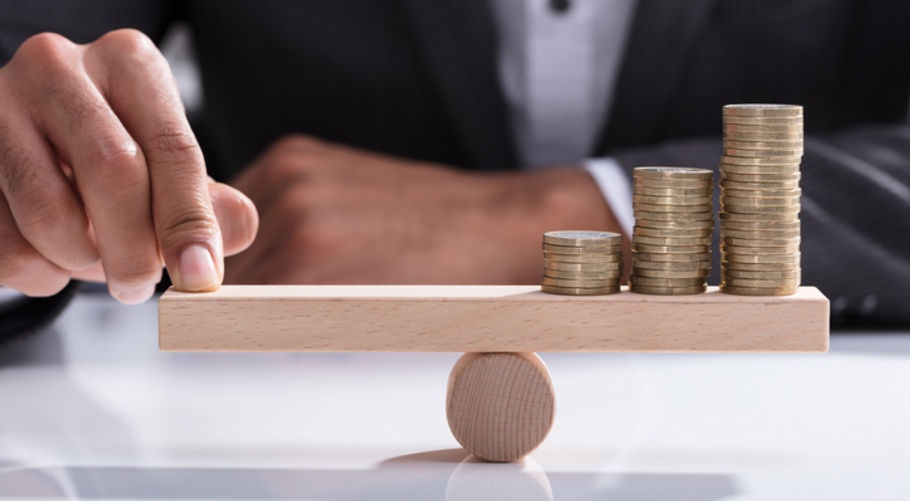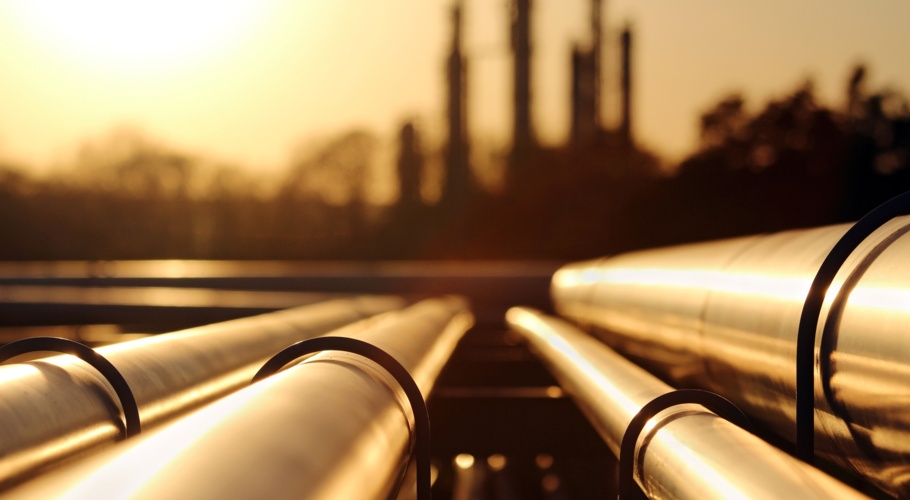Biggest lift in spending in 12 years
- Retail trade: Retail trade fell by 4.1 per cent in December after rising by 7.1 per cent in November. Compared with a year ago, retail trade was up by 9.6 per cent.
- In real (inflation-adjusted) terms, retail trade rose by 2.5 per cent in the December quarter after rising by 6.5 per cent in the September quarter.
- Annual change: In nominal terms Aussies spent $350 billion on retail items in 2020 ($263 per week per person), up 6.2 per cent on a year ago and the biggest calendar-year lift in a decade. CommSec has undertaken detailed analysis of spending at retail sub-groups using unpublished data provided by the Bureau of Statistics.
- Statement on Monetary Policy: After a strong ‘V-shaped’ economic recovery, the Reserve Bank expects ‘above-normal’ growth through to 2023.
What does it all mean?
- Finding it hard to keep up with the state of the economy given all the monthly and quarterly gyrations? Sometimes it pays to look at the big picture. And that is the case with retail spending. Over the entire 2020 year, Aussies spent a record $350 billion at retail businesses. The 6.2 per cent lift in spending was the biggest calendar year gain in 12 years – that is, since the 2007 calendar year. The biggest increase in spending was at liquor retailers (up 26.5 per cent) from ‘other’ recreational goods, like toys, games, entertainment, (up 24.8 per cent), and hardware retailing (up 20 per cent).
- Overall, Australians spent more than ever before. But it clearly wasn’t one-way traffic. Lockdowns meant fewer visits to cafes and restaurants – spending was down 25.4 per cent. And we spent less on clothes (down 8 per cent); shoes (down 9.5 per cent) and newspapers/books (down 12.2 per cent).
- There was a bit more inflation in the system as well. Spending rose 6.2 per cent, volumes rose 2.5 per cent, and, as a result, prices rose 3.6 per cent in 2020 – the biggest lift in prices in 19 years. Those higher prices largely reflect the lockdown period in the first half of 2020. In the December quarter retail prices were unchanged with annual price growth easing from 3.8 per cent to 3.4 per cent.
- In 2020, prices rise most at ‘other retailing’ – largely online stores (up 7 per cent); supermarkets & grocery stores (6.6 per cent); and food outlets like bakers and butchers (up 5.6 per cent). But clothing prices actually fell by 0.8 per cent.
- While growth in total spending rose at the fastest rate in 12 years, the 2.5 per cent lift in the actual number of purchases was only the fastest in four years.
- To get a more comprehensive picture of total retail spending we have to wait to early March when the national accounts is released.
The current risk to the Reserve Bank forecasts is on the upside. Just as the jobless rate didn’t reach 10 per cent, it is possible that jobs, inflation and wages could lift faster and higher than the Reserve Bank expects. At present it is a watching brief. And as the Reserve Bank Governor acknowledges, it is still a highly uncertain environment. But the success in suppressing the virus has yielded economic benefits. 
What do you need to know?
Retail trade – December 2020
- Retail trade fell by 4.1 per cent in December after rising by 7.1 per cent in November. Compared with a year ago, retail trade was up by 9.6 per cent.
The Australian Bureau of Statistics (ABS) wrote:
- "Victoria (-6.8 per cent) led falls at the state and territory level following stronger trade in November as COVID-19 restrictions eased. New South Wales (-4.9 per cent) also fell as the Northern Beaches cluster impacted spending in the lead-up to Christmas. Queensland (-1.8 per cent), Western Australia (-2.0 per cent), Tasmania (-4.6 per cent), South Australia (-0.7 per cent), and the Australian Capital Territory (-1.6 per cent) also fell.” Spending rose 1.1 per cent in the Northern Territory.
- "Following the large rise in November, five of the six industries fell in December, led by household goods retailing (-8.3 per cent). Clothing, footwear and personal accessory retailing (-9.4 per cent), department stores (-12.5 per cent), food retailing (-1.7 per cent), and other retailing (-4.4 per cent) also fell in December. Cafes, restaurants and takeaway food services (3.2 per cent) was the only industry to rise in December.”
Retail trade – December quarter 2020
- In real (inflation-adjusted) terms, retail trade rose by 2.5 per cent in the December quarter after rising by 6.5 per cent in the September quarter. Retail volumes are up 6.4 per cent on a year ago.
- In nominal terms (includes inflation), retail trade rose by 2.5 per cent in the December quarter after rising 7.0 per cent in the September quarter.
- Prices across retailers rose by 1.2 per cent in the June quarter after rising 1.9 per cent in the March quarter (biggest quarterly increase in 31 years, excluding the GST introduction). Annual growth of retail prices rose from 3.5 per cent to 4.2 per cent.
The ABS noted:
- “At a national level, clothing, footwear and personal accessory retailing (18.1 per cent), and cafes, restaurants and takeaway food services (10.4 per cent), led the rises in seasonally adjusted volume terms. Department stores (12.0 per cent), and other retailing (2.7 per cent) also rose.
- Food retailing (-2.6 per cent), and household goods retailing (-0.6 per cent), recorded quarter-on-quarter falls in seasonally adjusted volume terms.”
Statement on Monetary Policy
- The report can be found here: https://www.rba.gov.au/publications/smp/2021/feb/
- The accompanying table shows the evolution of Reserve Bank forecasts over the last six months. The ‘upside scenario’ has dominated over that period. And it is clear that Australia is experiencing a ‘V-shaped’ recovery.
- Economic activity has bounced back quickly and unemployment now looks to have already peaked. Unemployment is tipped to ease to 5.25 per cent by mid-2023.
What is the importance of the economic data?
- The Bureau of Statistics’ Retail trade publication contains the most current readings on the performance of consumer spending. The ABS surveys 500 ‘larger businesses’ and 2,750 ‘smaller businesses’. Retail trade covers spending at a broad range of retail outlets but excludes both petrol and motor vehicle sales. A weak retail trade result may point to a slowing economy as well weighing on the share prices of listed retail stocks. But retail trade estimates can’t be assessed in isolation – it is important to look at the influences determining future trends in consumer spending, such as income, employment and confidence levels.
- The Reserve Bank releases its Statement on Monetary Policy each quarter. The Statement is the Reserve Bank’s assessment of economic and financial conditions and also contains the latest inflation views. The Statement is crucial in assessing the short-term outlook for interest rates.
What are the implications for investors?
- Interest rates are going nowhere fast. The Reserve Bank doesn’t want to contemplate rate hikes until 2024. But the economy has surprised with its resilience over 2020. And not only have producers noted higher inflation, but businesses are finding harder to get certain staff.
- If the economy does continue to lift, the Reserve Bank will tolerate higher inflation for longer to ensure that the economy is truly back on its feet.
- The retail sector had a volatile 2020. There were winners and losers. Should there be fewer lockdowns and the vaccine rollout go to plan, 2021 may prove more settled. Fiscal stimulus will be unwound over the year but the job market should continue to improve, interest rates will stay low and home building will be strong. So retail spending will remain healthy – especially with foreign borders closed and savings hoarded – but annual growth rates will probably ease from near 10 per cent to 2-4 per cent.
The information presented on this page is an extract of a CommSec Economic Insights report. The full report is published on the CommSec website (under Market News > The Markets). The extract and full report are approved for distribution in Australia only and must not be directed or distributed to any person or entity outside Australia.

